Copenhagen is ranked the #1 city in the world for biking. It’s not just bike-friendly; there are bicycle-only streets, paths, and bridges. While the metro is incredibly easy to navigate, Copenhagen must be seen on a bicycle.
There are as many bicycles as there are people in Denmark, so you won’t be surprised to learn there are dozens of bike shops and rental kiosks throughout the city. Take a stroll down to the Inderhavnsbroen bridge and you’ll find plenty of options there. During my visit, I rented a bike through my hotel’s front desk (15 € for 24 hours); however, one of the city’s bike-share programs is an affordable alternative (4 € per hour).
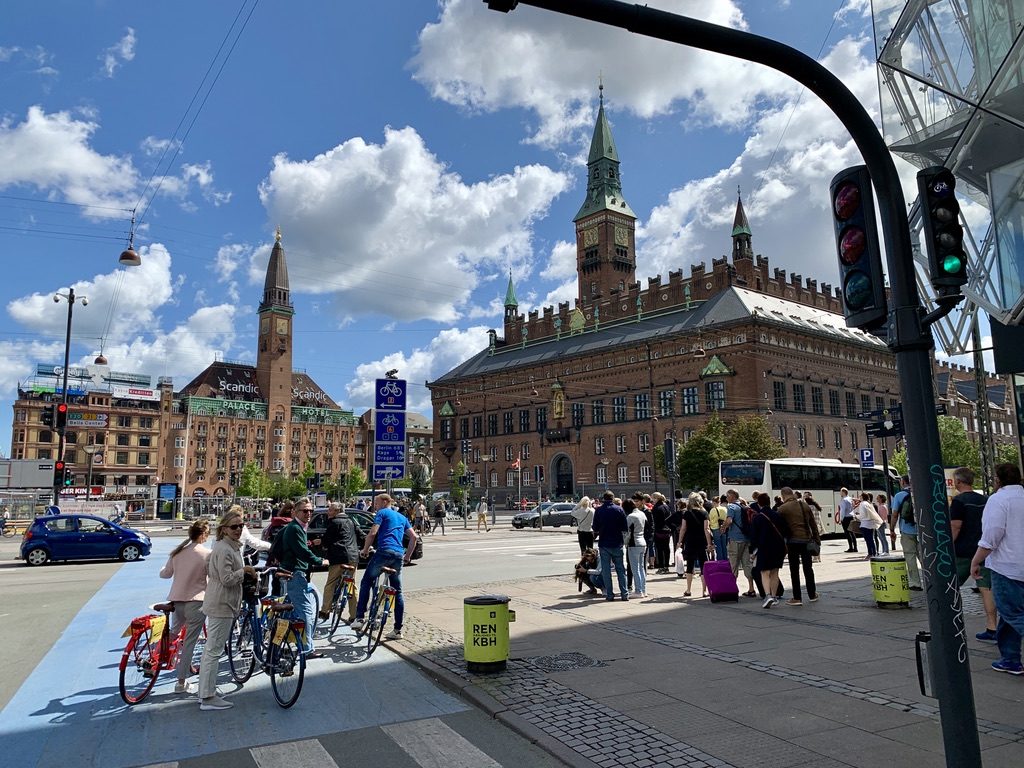
Copenhagen City Hall (July 2019)
I visited the Copenhagen in July, and despite 18 hours of daylight during the summer, the weather can still cool and damp (I’d equate it to a spring in the Pacific Northwest). Before taking this 6-hour circuit across the city, bring layers and sunnies.
Vesterbro
Vesterbro is a on the southwest side of central Copenhagen, sandwiched between the Carlsberg and Meatpacking districts. It’s a 20-minute bike ride (or 2 metro stops) from the main city center and offers a quiet escape from the tourist center. There are several small parks in Vesterbro, and you can find affordable international restaurants all along Sønder Blvd.
Tivoli Gardens
Tivoli Gardens is the most popular attraction in Copenhagen, and the entrance gates were packed all day when I was there. As one of the world’s oldest theme parks. It’s beautiful and historic (Walt Disney visited before building Disneyland in California in the 1950s), but I would recommend going for the sights over the rides. Here are a few tips I picked up during my trip:
- Tickets can be purchased online in advance
- A ticket is required to enter the park (20 €) but many rides require an additional fare from 5 € to 15 €; therefore, you may want to buy the unlimited ride pass for about 30 €, which includes the 20 € admission ticket.
- If you’re like me and don’t want to plan your visit in advance (weather is an important consideration), avoid the front gate and use the entrance inside the Tivoli Food Hall. On the back patio of Tivoli Food Hall, you’ll find automated ticket vending machines, as well as a gate with in-and-out privileges to the park.
- Note: during summer months, the park closes the rides early on Fridays to host outdoor concerts. While you can’t see the stage from the food hall, you will certainly hear the music.
Christiansborg Palace
Christiansborg Palace is an active government building and houses all three branches of the Danish Government: the Danish Parliament, the Danish Prime Minister, and the Supreme Court of Denmark. Despite its nomenclature, this ‘palace’ was never the official residence for the Danish Royal Family (only one Danish king actually lived here); it was largely used for large social and political gatherings. Today, there are several museums and tours available within the palace (Royal Stables, Old Castle Ruins, Royal Kitchen, etc.), but as it’s not Versailles, I opted to pass.

Christiansborg Palace (July 2019)
Nyhavn
Nyhavn is right in the heart of the tourist center. This scenic and charming neighborhood served as the backdrop for The Danish Girl, but it’s overloaded with tourists, overpriced restaurants, and souvenir shops. It’s worth seeing, but much like The Fisherman’s Wharf in San Francisco, come to take a picture (maybe a beer) and then get out.

Nyhavn (July 2019)
Botanical Gardens
Just six minutes from Nyhavn on a bicycle, the University of Copenhagen’s free Botanical Gardens are a great way to enjoy an afternoon. During the summer months, you can enter the Cactus House, Palm House and Butterfly House for 8 €, which contain hundreds of subtropical flora and fauna.
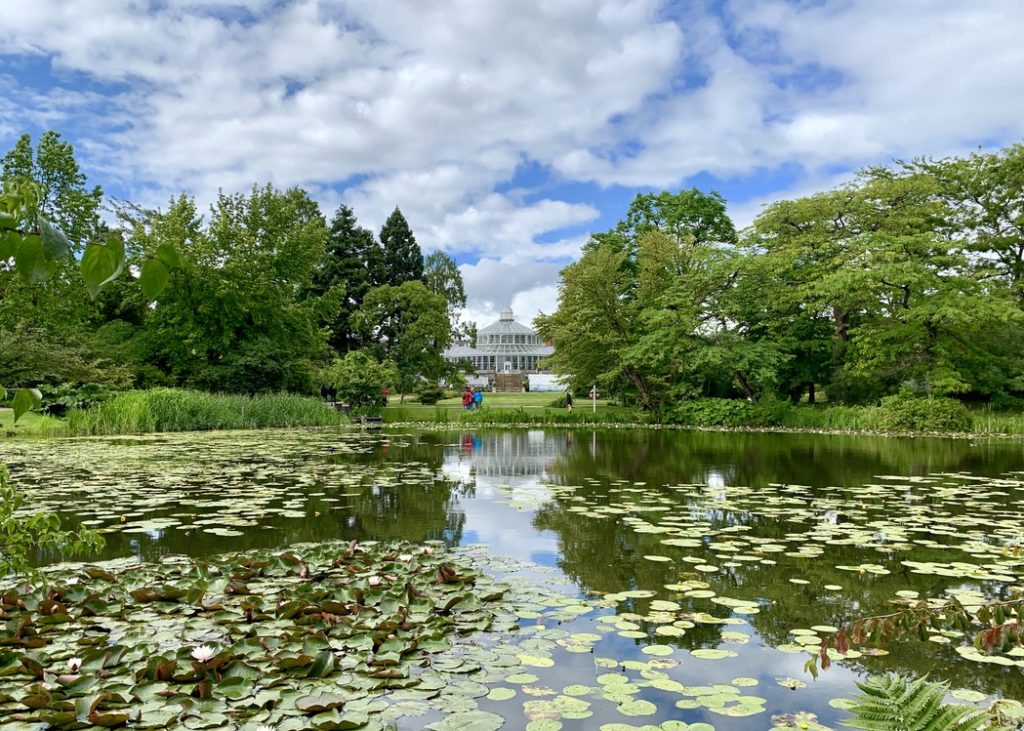
The University of Copenhagen Botanical Gardens (July 2019)
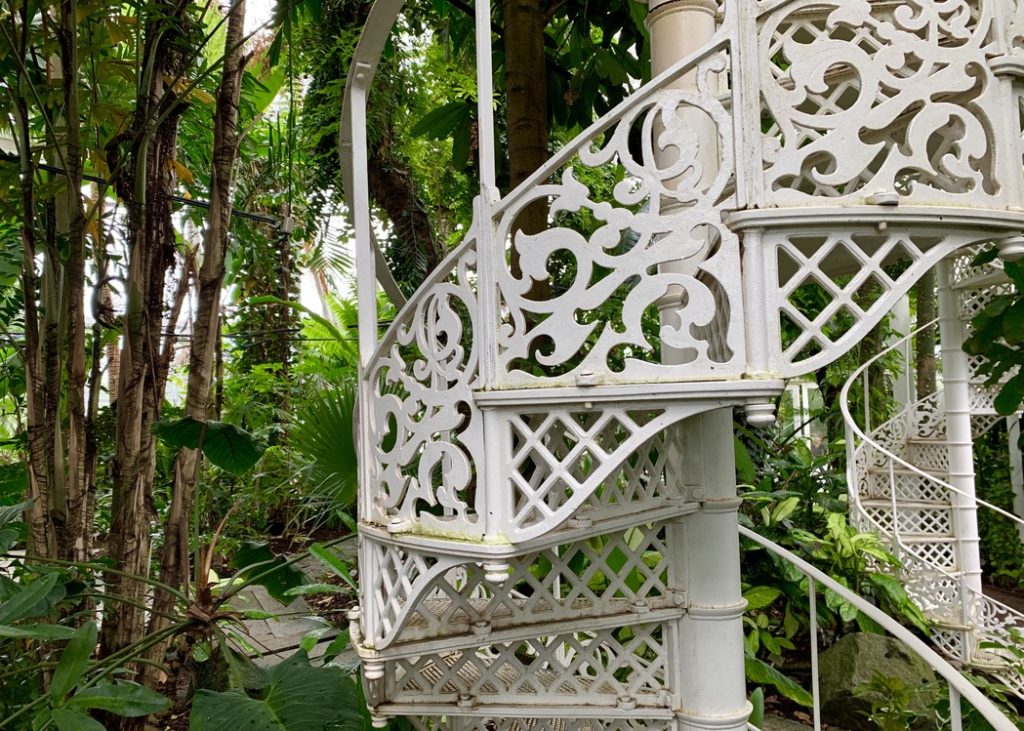
The Palm House, Botanical Gardens (July 2019)
Kastellet
The Kastellet is an old fortress and active military compound near the entrance to Copenhagen Harbor. From above, the compound is shaped like a five-pointed star. It’s open to the public (pedestrians and bicycles) and every day at 1200 there’s a changing of the guard ceremony. If you explore one of the tips of the star, you’ll find old windmills inside beautiful tree-lined meadows.

A view of St Alban’s Church from the Kastellet (July 2019)
The Little Mermaid (Den Lille Havfrue)
The Little Mermaid, or Den Lille Havfrue in Danish, is Copenhagen’s most iconic landmark. Much like the NYC’s Statue of Liberty or Rio’s Christ the Redeemer, it’s often used as the city’s symbol. Gifted by the Jacobsen family (of Carlsberg beer fame), the bronze statue depicts the protagonist from Hans Christian Andersen’s fairytale, The Little Mermaid.
What surprised me about Den Lille Havfrue was its size; it’s a mere 1.25 meters tall and only a meters from the harbor’s shore. Given this statue’s importance to the history of Copenhagen, it’s worth a visit, but get there early; it’s very close to cruise port and often flooded by those tourists in the afternoon.
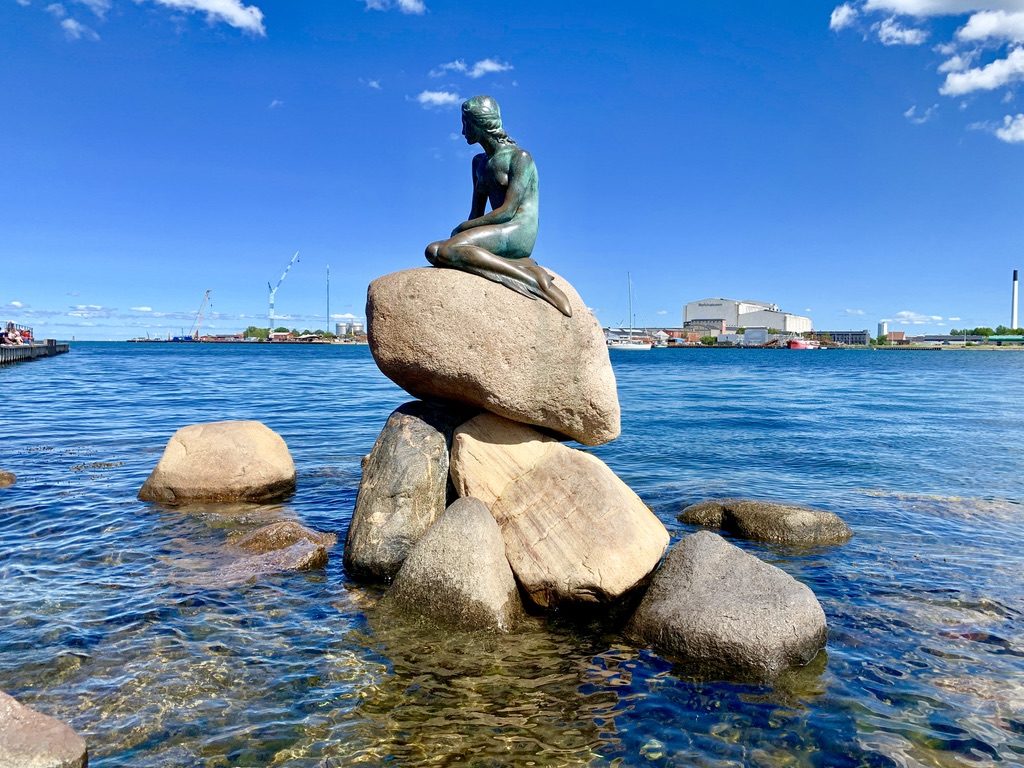
The Little Mermaid (July 2019)
Church of Our Savior
The best view of Copenhagen is from the top of the spire at Vor Frelsers Kirke, or Church of Our Savior in English. It’s one of the most impressive churches it Copenhagen and sits on Christianshavn neighborhood, a small island across the harbor from the city center. It has a single gold, spiral tower that stretches 90-meters above the city streets. If you’re willing the brave this narrow and nerve-wracking climb to the top, you’ll be rewarded with views that stretch across the Baltic Sea into Sweden.
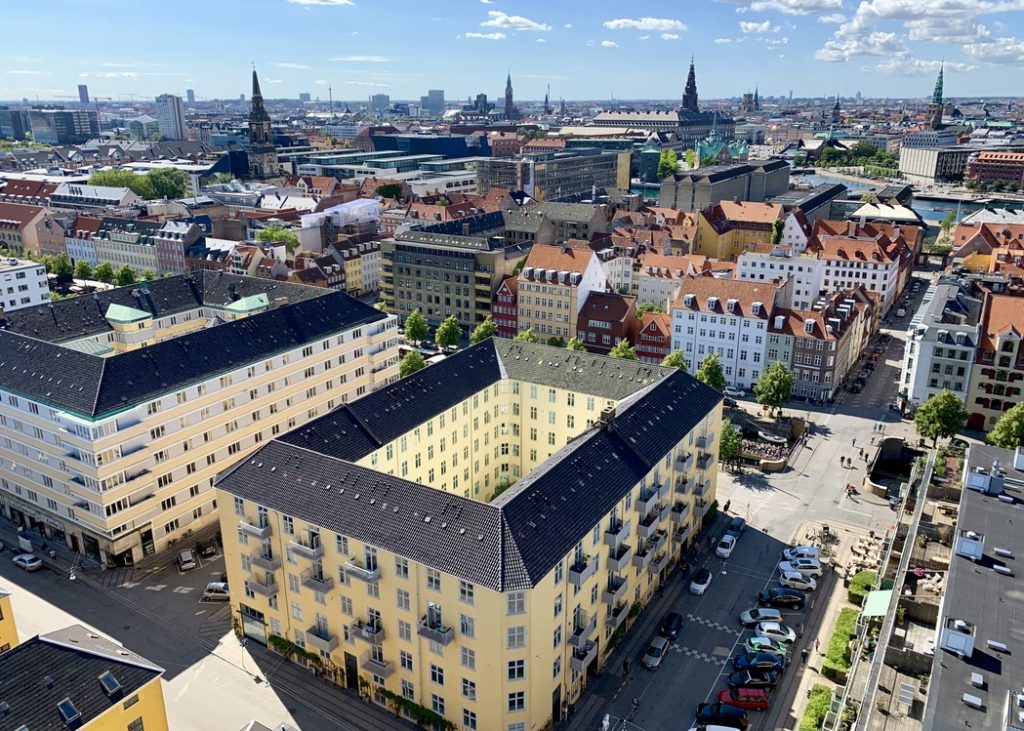
Copenhagen skyline as viewed from The Church of Our Savior (July 2019)
Christiania
Freetown Christiania is a hippie commune founded in the 1970s. It occupies abandoned military barracks and is only accessible by foot (cars and bikes will need to be parked outside the commune). For decades it has rejected Danish law and law enforcement, but even with its troubled history, it’s safe to visit as a tourist. On a sunny afternoon, grab a beer at Cafe Nemoland and sit along the harbor or peruse the flea markets that line the streets of Christiania.

Freetown Christiania (July 2019)
Meatpacking District
The Meatpacking District is extremely popular among locals. There are dozens of restaurants and bars that occupy the former meatpacking warehouses. I wouldn’t recommend having a full meal here, but grab a beverage and sit outside to enjoy the Scandinavian summer.
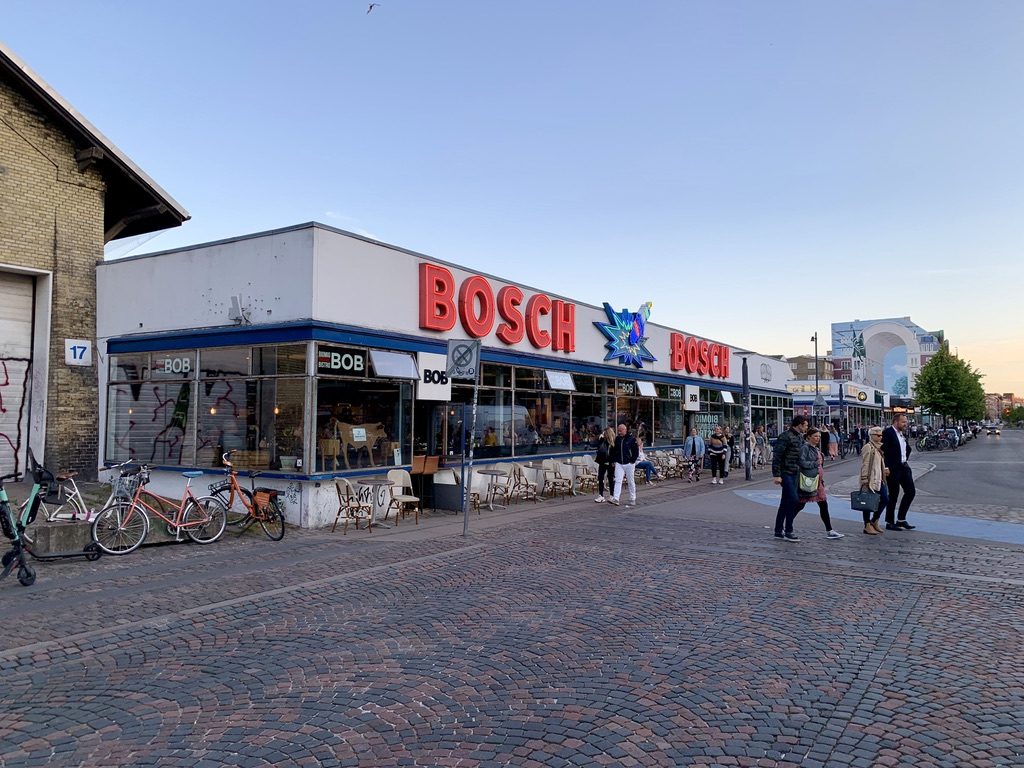
Meatpacking District (July 2019)